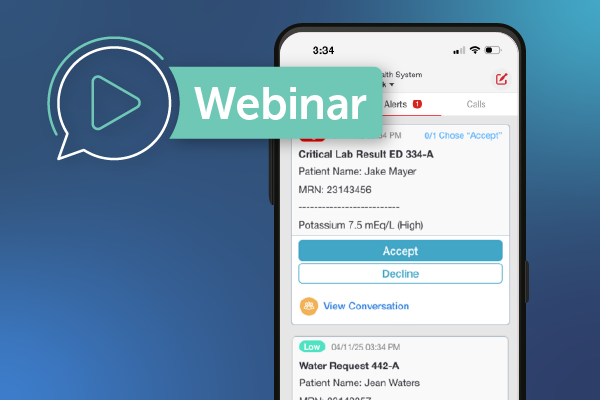
Understand What a Chief Patient Experience Officer Does, as well as Learn about the Evolving Role of CXOs
Over the last 25 years, technology wizards have conjured noteworthy changes in healthcare operations through powerful technologies, such as:
- Electronic Health Record (EHR) systems
- Telehealth
- Big Data
- Artificial Intelligence (AI)
- Wearable devices that track and record health data
- 3D printing
Another class of advancements came from smartphone apps, such as secure texting and the ability to send images and video directly to a clinician’s handheld device.
As healthcare providers worked to integrate these technology advancements in order to improve patient outcomes, the Affordable Care Act (ACA) of 2010 linked reimbursements to patient satisfaction. It soon became clear to providers that they could leverage the technologies they were already implementing to also boost patient satisfaction.
The question was, who in healthcare leadership should ensure that these technology offerings supported an organization’s mission and helped it preserve full Medicare reimbursements?
In the early days, it made sense for the Chief Medical Officer, Chief Operations Officer, or the Chief Quality Officer to assume at least partial responsibility for selecting and rolling out advanced clinical technologies.
However, in 2007, Cleveland Clinic introduced us to a new chief, the Chief Patient Experience Officer, or CXO. Three years later, when the ACA drew attention to patient satisfaction, it made sense that the CXO would be involved in technology rollouts that influence patient satisfaction scores and reimbursements.

Introducing The Connected Care Team Podcast
What Is a Chief Patient Experience Officer?
The Chief Patient Experience Officer, sometimes shortened to Chief Patient Officer, is a member of the executive leadership team. They are the primary person who pays attention to every aspect of a patient’s journey at their organization.
The CXO often has accountability for patient safety and quality of care, but that’s just the beginning. Here’s a comprehensive – though not exhaustive – list of areas the CXO may be watching and seeking to improve:
- Appointment scheduling and reminders
- Wait time to get an appointment
- Wait time at appointments
- Parking
- Signage
- Access to reliable onsite WiFi
- Impressions of kindness, helpfulness, compassion, friendliness, knowledge, respect, and professionalism of physicians and all other clinicians
- Quality and support for a healthcare communication platform that includes phone calls, secure text messages, and virtual visits
- Quality and variety of meals
- Perceived interest in the patient and their family
- Usability of patient portal and website
- Readability of appointment information, after-visit summary, lab results, and bills
- Access to emotional, educational, and spiritual support
The CXO tries to rally all employees to see every touchpoint from the patient’s perspective. But how? And then what? Let’s look closer.
What Does a Chief Experience Officer Do?
“Experts say the job is a tough one that requires strong support from top hospital leaders, deep understanding of hospital performance improvement and a deft personal touch.” –– Modern Healthcare
In a typical week, a patient experience officer engages with people from up to five diverse groups:
- Executive leadership
- Clinical staff
- Non-clinical staff
- Patients and their families
- Vendors
These interactions can range from hallway conversations with physicians to Zoom calls with IT vendors promoting new communication solutions, as well as C-Suite meetings with executive leadership to informal chats with registration clerks to emotional discussions with grateful patients.
To accomplish these wide-ranging interactions, the CXO must have superior communication skills. But that’s not all.
- Because the role of patient experience officer requires a champion, the CXO must also possess:
- Business intelligence, which must be supported by:
- Professional knowledge and experience
- Strategic thinking and planning
- Emotional intelligence, which must be supported by:
- Empathy
- Integrity
- Wisdom
- Compassion
Since most CXOs don’t have a large staff, they also must do much of their own:
- Evaluating: Understand the complete patient experience through interviews, surveys, and online reviews
- Marketing: Gain buy-in and generate enthusiasm at all levels of the organization by articulating organizational strategy
- Mentoring: Ensure everyone understands how each action affects the patient experience
- Mobilizing: Get every employee involved and provide the tools they need to improve the patient experience
- Collaborating: Work with senior executives, directors, and managers to develop programs that channel energy toward the fulfilling work of caring for patients and their families
- Outreach: Participate in, and facilitate, communications between healthcare professionals and patients, whether online or face-to-face
- Reporting: Set priorities, select supporting objective metrics, and regularly communicate the programs’ effectiveness through meaningful statistics and stories
(It may have been easier to ask, “What doesn’t a CXO do?”!)
The Evolving Role of CXOs in the Healthcare Industry
“Patient experience has not just grown, it has matured. It did not end up being another thing healthcare does, but rather it is establishing itself at the heart of what healthcare aspires to be.” –– from The State of Patient Experience 2019, The Beryl Institute
In the early years, a CXO focused on improving patient safety and satisfaction, driven mostly by HCAHPS scores that impacted reimbursements.
But as NewYork-Presbyterian Hospital CXO Rick Evans shares, “We are striving for something more profound: confidence. We work together to help our patients feel that they are in good hands — that they are safe, cared for and surrounded by a highly competent team. When we gain the confidence of those we serve, every patient experience metric goes in the right direction.”
And how can you earn the confidence of your patients and families? According to Mr. Evans, the CXO must keep their organization focused “on the right things, in the right combination, at the right time.” If the organization can sustain this focus, clinical and non-clinical staff will support evidence-based interventions that improve confidence – and, consequently, the patient experience.
A primary “right thing” is communication. The Advisory Board lists the top three categories on which patients rate experience:
- Communication with nurses
- Pain management
- Timeliness of assistance
All these areas depend on excellent patient-provider interaction and care team coordination. The Advisory Board’s conclusion? “Patients are not really looking for a cleaner room or better food. They seek caregivers who communicate with them, and with one another.”
Increase in Demand for Chief Patient Officers
Even as the Chief Experience Officer role is evolving, this executive is more and more in demand. To illustrate the recent increase, run a search online for the exact phrase “first chief patient experience officer.” You might be surprised to see the number of organizations that hired their first CXO within the past four years. In fact, the Beryl Institute reports in Healthcare 2020: How Automated Patient Experiences Will Transform the Landscape that 40 percent of organizations with a Chief Experience Officer has had the role for two years or less.
The message is clear: Patient experience is a big deal, and healthcare organizations are staffing to address the priority and meet the needs of patients.
Conclusions
More hospitals are hiring Chief Patient Experience Officers, and as the role matures, we’re learning that patients want to see evidence of exceptional communication, both with their clinicians and between their clinicians.
CXOs will benefit from advanced communication solutions that give patients easy ways to communicate with hospital staff, while also improving intra-hospital collaboration to reduce wait times, streamline the discharge process, and improve other critical workflows. A smoothly running hospital will improve patient confidence, which leads to increased patient satisfaction and better patient experience.
Featured Resources
Related Articles













